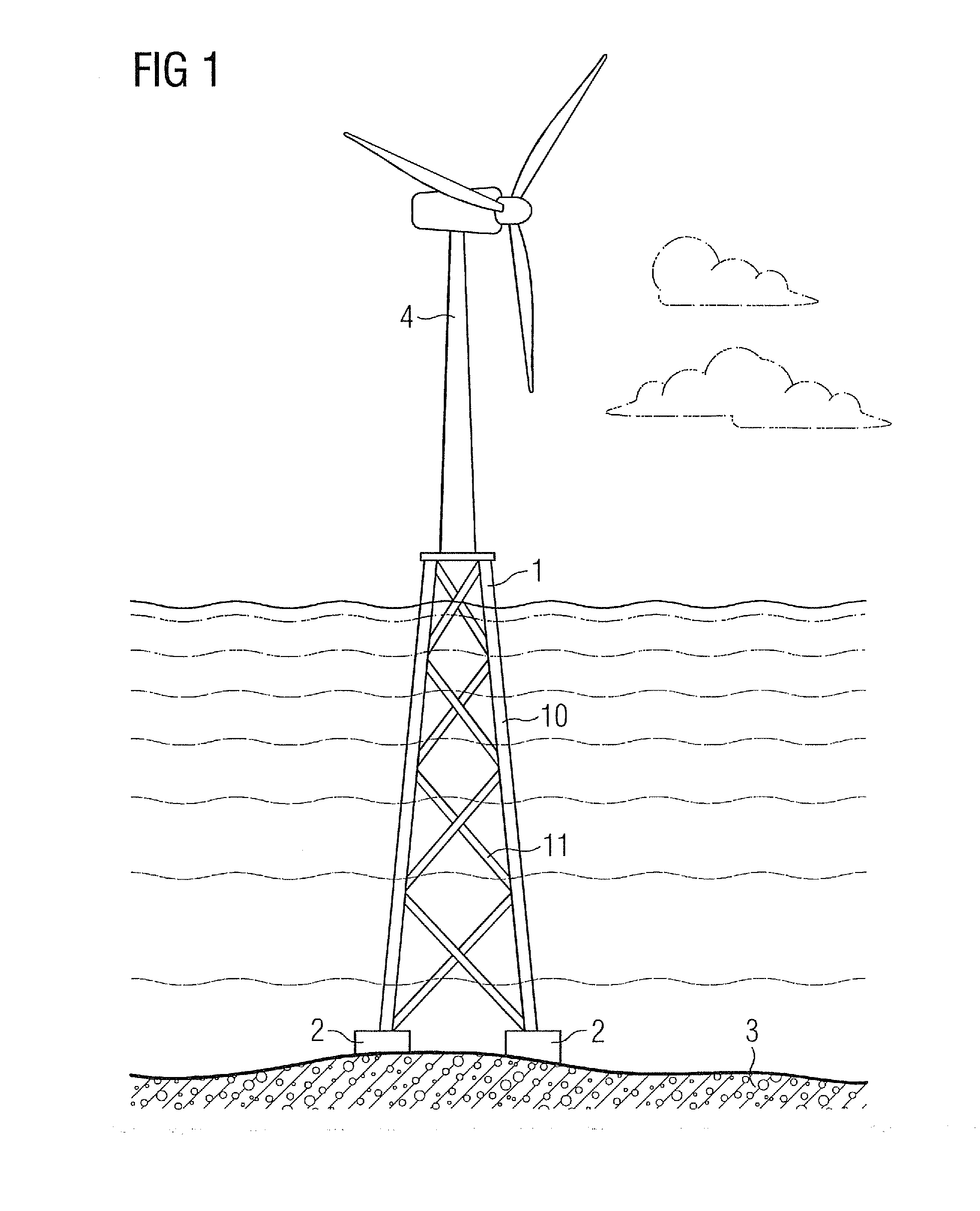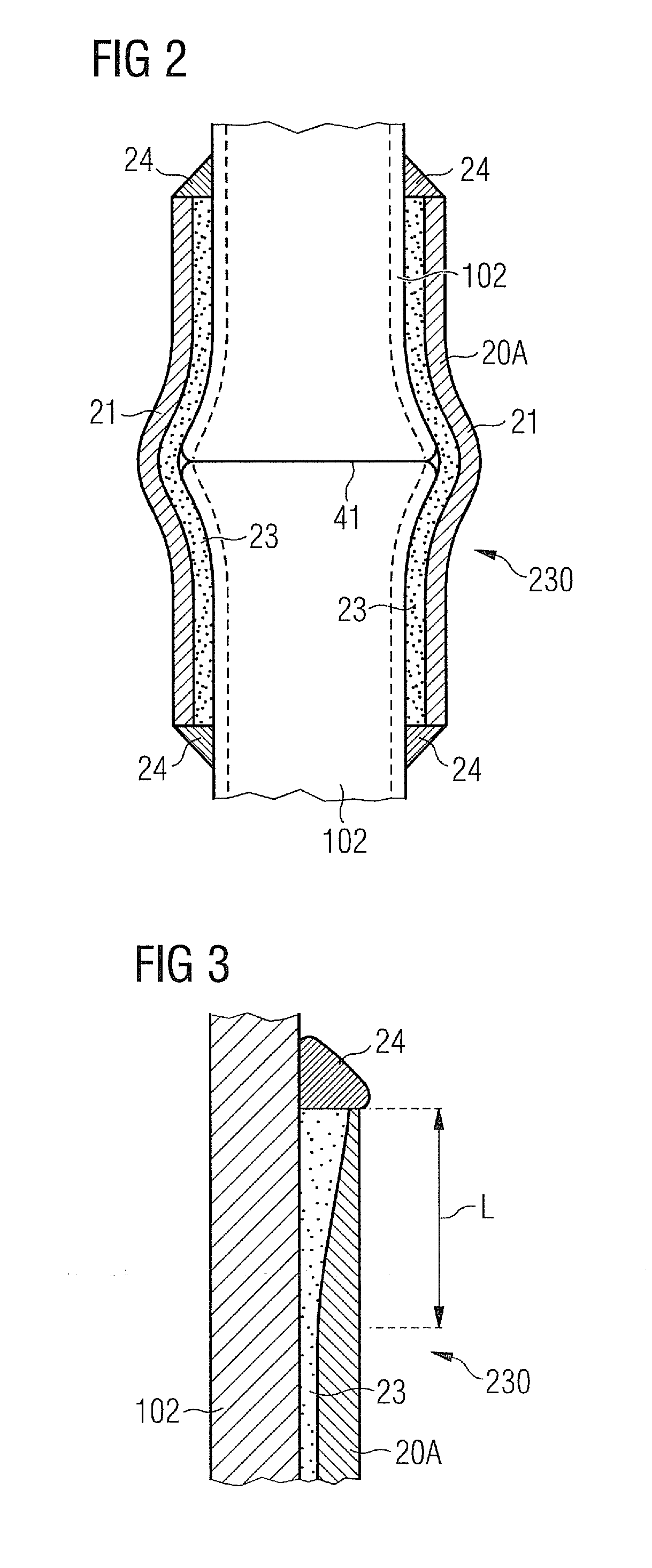Method of assembling a jacket structure
a jacket and jacket technology, applied in the field of methods of assembling a jacket structure and a jacket structure, can solve the problems of high welding cost, high welding cost, and associated cos
- Summary
- Abstract
- Description
- Claims
- Application Information
AI Technical Summary
Benefits of technology
Problems solved by technology
Method used
Image
Examples
first embodiment
[0054]FIG. 7 shows various other realizations of node elements for connecting a leg to one or more braces of a jacket structure according to an embodiment. In a first embodiment shown in part A of the diagram, a node 20B is a cast node with two tubular extensions 26 arranged at appropriate angles for connecting to braces. In the example shown, the cast node 20B is connected to the leg parts 101 by means of long bolts 40 through flanges in the interior of the leg. Of course, such a node 20B may be realized with only one tubular extension 26, and two such nodes may be bolted, one above the other, between successive leg parts 101 of a leg.
second embodiment
[0055]In a second embodiment shown in part B of the diagram, a node 20C is realized as two halves 21 or shell pieces 21 shaped to fit over a shear key joint 41 or shear lock 41 between leg pieces 102. Instead of a tubular extension, one or more devises 30 may be arranged onto a shell piece 21, for example by casting. Such a clevis 30 comprises a clevis tray 31 and side walls 33 with through holes 32 for connecting to a brace. The node sleeve pieces 21 may be bolted together using short bolts 42 on flanges along the vertical edges of the node sleeve pieces 21.
third embodiment
[0056]In a third embodiment shown in part C of the diagram, a node 20C is realized as two shell pieces 22 shaped to fit over an external flange joint 44 of two leg pieces 103, as indicated by the broken lines. This embodiment might be favorable if leg pieces 103 with external flanges, for bolting together using short bolts, are to be used. The node 20C may be cast with one or more tubular extensions or devises for connecting to a corresponding number of braces.
[0057]A node may connect to more than one brace. For example, for a four-leg jacket, two tubular extensions or clevises may be arranged on a node at essentially right angles to provide connecting points for two braces arranged between two leg pairs, whereby one leg is common to each leg pair, and the node is arranged on that leg. For a three-leg jacket, two extensions may be arranged at an essentially 120° angle to each other on a single node.
[0058]A brace 11 may comprise a pipe piece 110 with a cast gusset 12 at either end (o...
PUM
| Property | Measurement | Unit |
|---|---|---|
| Thickness | aaaaa | aaaaa |
Abstract
Description
Claims
Application Information
 Login to View More
Login to View More - R&D
- Intellectual Property
- Life Sciences
- Materials
- Tech Scout
- Unparalleled Data Quality
- Higher Quality Content
- 60% Fewer Hallucinations
Browse by: Latest US Patents, China's latest patents, Technical Efficacy Thesaurus, Application Domain, Technology Topic, Popular Technical Reports.
© 2025 PatSnap. All rights reserved.Legal|Privacy policy|Modern Slavery Act Transparency Statement|Sitemap|About US| Contact US: help@patsnap.com



